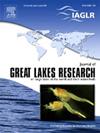在非洲热带湖泊中为可持续的社区网箱水产养殖松绑,促进蓝色增长
IF 2.4
3区 环境科学与生态学
Q3 ENVIRONMENTAL SCIENCES
引用次数: 0
摘要
网箱水产养殖正在非洲大湖区迅速扩展,有可能在提高水产品产量的同时提供粮食安全、减少贫困和创造就业机会。然而,越来越多的人担心,维多利亚湖中网箱养鱼的扩散将对湖泊生态产生有害影响。本研究以肯尼亚维多利亚湖为案例,根据社会经济、物理化学、生物变量和湖中风险,评估了基于社区的网箱水产养殖的可持续性特征,并提出了潜在的缓解措施。据估计,潜在的生产承载能力是目前网箱养殖产量的 500% 以上,但必须采用良好水产养殖规范 (GAP) 和最佳管理规范 (BMP),以实现可持续的湖泊生态。研究建议使用基于社区的网箱养殖框架、适当的政策和法规来改善湖泊和资源管理,以及指导网箱养殖企业、提高安全性和促进资源使用争端解决程序。本文章由计算机程序翻译,如有差异,请以英文原文为准。
Unbundling sustainable community-based cage aquaculture in an afrotropical lake for blue growth
Cage aquaculture is rapidly expanding in the African Great Lakes Region, with the potential of boosting fish output while also providing food security, poverty reduction, and job creation. However, there is growing concern that the proliferation of fish cages in Lake Victoria will have a detrimental effect on the lake’s ecology. Using Lake Victoria, Kenya as a case study, the current study evaluated the sustainability features of a community-based cage aquaculture that are based on socio-economic, physico-chemical, biological variables and risks in the lake and proposed potential mitigation measures. The potential production carrying capacity was estimated to be more than 500% of current cage culture production, but subject to the use of good aquaculture practices (GAPs) and best management practices (BMPs) for sustainable lake ecology. The study suggests using a community-based cage culture framework, appropriate policies and regulations, to improve lake and resource management, as well as to guide cage culture businesses, improve security, and facilitate resource usage dispute resolution procedures.
求助全文
通过发布文献求助,成功后即可免费获取论文全文。
去求助
来源期刊

Journal of Great Lakes Research
生物-海洋与淡水生物学
CiteScore
5.10
自引率
13.60%
发文量
178
审稿时长
6 months
期刊介绍:
Published six times per year, the Journal of Great Lakes Research is multidisciplinary in its coverage, publishing manuscripts on a wide range of theoretical and applied topics in the natural science fields of biology, chemistry, physics, geology, as well as social sciences of the large lakes of the world and their watersheds. Large lakes generally are considered as those lakes which have a mean surface area of >500 km2 (see Herdendorf, C.E. 1982. Large lakes of the world. J. Great Lakes Res. 8:379-412, for examples), although smaller lakes may be considered, especially if they are very deep. We also welcome contributions on saline lakes and research on estuarine waters where the results have application to large lakes.
 求助内容:
求助内容: 应助结果提醒方式:
应助结果提醒方式:


